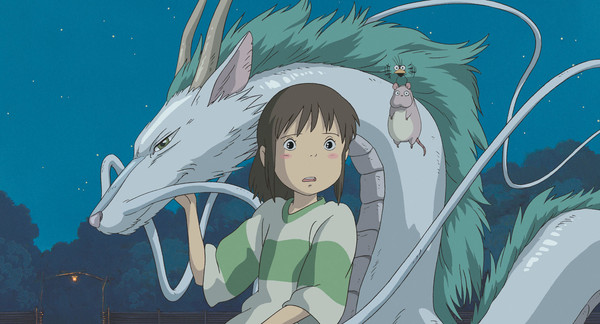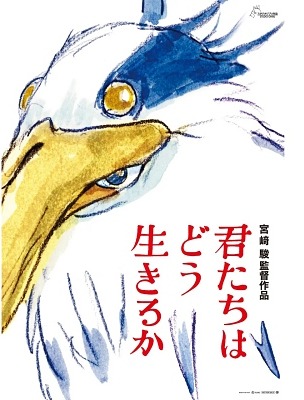During childhood, everyone has their own innocence. Hayao Miyazaki’s films are another way to enjoy that innocence. Hayao Miyazaki is a Japanese animation director who has created many successful works. He has had a tremendous influence on the Japanese animation industry. Japanese animation underwent significant changes after Miyazaki’s emergence, to the extent that the term 'post-Miyazaki’ was coined. With such fame, Miyazaki announced his film, The Boy and the Heron (2023). As we await the screening of The boy and the Heron, let's explore his world of works together.
Life of Hayao Miyazaki
Hayao Miyazaki is known to have reflected many of his own childhood experiences into his works. To better understand his works, let's first explore his life. Miyazaki was born in 1941 in Tokyo, Japan. It was during his high school years when he started developing an interest in animation after watching the film The White Snake Enchantress (1958) by Toei Animation. This work marked the beginning of his fascination with animation, and he decided to pursue a career in the animation industry. After graduating from university, Miyazaki joined Toei Animation, the studio that had sparked his dream of animation. He began his career as an animator there. However, he frequently clashed with the company's opinion about the type of work he aspired to create. This led Miyazaki to decide to work as a freelancer. His first work as a freelancer was Nausicaa of the Valley of Wind (1984). Initially, it was published in the form of a comic book series. After gaining a following, Miyazaki decided to create theatrical animation films. Despite being his first animated film release, Nausicaa of the Valley of Wind drew in approximately 915,000 viewers. Even though it was not a massive box office success, Miyazaki stated, "I felt relieved, thinking there would be another opportunity to make the next work."
By establishing the well-known animation company, Studio Ghibli, Hayao Miyazaki continued his career in creating animated works. While Miyazaki's works were already famous in Japan throughout the 1990s, it was in 1999 when Princess Mononoke (1997) was released internationally, that he started gaining fame worldwide. After this success, his renowned works such as Spirited Away (2001) achieved commercial success and won Best Animated Feature at the 75th Academy Awards. In addition to these successive successes, he received attention for other amazing works like My Neighbor Totoro (1988), Kiki's Delivery Service (1989), Howl's Moving Castle (2004), and Ponyo on the Cliff (2008) from audiences. In September 2013, Miyazaki initially declared his retirement due to difficulties in creating new works because of his age. However, he later withdrew his retirement decision, citing that he still had many things he wanted to do.
Themes of Miyazaki’s Films
Let’s find out the common themes of Miyazaki’s films.
Sky and Airplane

Hayao Miyazaki's works prominently feature flight, symbolizing the abstract concept of freedom. He intuitively expressed the message of freedom through the act of flying. Additionally, his father's aircraft factory during his childhood unconsciously influenced his deep affection for airplanes. He was always fascinated by the fact that heavy machines could soar freely in the sky. Miyazaki's admiration for flight is evident in several of his works. In the movie Castle in the Sky (1986), the floating island is depicted as soaring through the sky. Another famous scene illustrating Miyazaki's fascination with flight is from Howl's Moving Castle, where two of the main characters walk in mid-air. Flight is used to rescue the characters who find themselves in perilous situations. One work that exemplifies Miyazaki's passion for flight is Porco Rosso (1992). In this film, all the aircraft, including the iconic Red Plane, were personally designed by Hayao Miyazaki himself.
Strong Woman Protagonist

Hayao Miyazaki's works often represent strong female characters who achieve remarkable feats and lead positive transformations in adverse situations. These resilient and wise female protagonists consistently take charge and navigate through challenges. For example, in Spirited Away, the female lead confronts and overcomes various trials, ultimately finding her lost parents. In Nausicaa of the Valley of Wind, the female protagonist safeguards her valley from harm. Miyazaki addressed the question of why he predominantly features girls as protagonists in his works in interviews, stating, "Today's men have lost their vitality, and even if they were to shoot a gun, it would only feel mechanical." This response carries a message of resistance against a history dominated by war and male-centric ideologies. Revealing his deep appreciation for female protagonists, he further emphasized, "They'll need a friend, or a supporter, but never a savior. Any woman is just as capable of being a hero as any man."
Naturalism

In Hayao Miyazaki's works, forests and nature often play a significant role, symbolizing the need to protect the natural world that has been disrupted by human selfishness and civilization. In Spirited Away, for instance, a river spirit polluted by garbage from humans visits a bathhouse for cleansing. During the cleansing process, it becomes evident that not only others, but even a human can remove the trash stuck in the spirit. It signified that even though human greed destroys nature, there is potential for reconciliation and harmony between humans and nature. In a similar context, Miyazaki does not advocate blind worship of nature. Characters in Princess Mononoke serve as intermediaries between human civilization and nature. His storytelling consistently emphasizes the importance of finding a balance between the two, rather than rejecting one in favor of the other. His final step is not about denying a place that disrespects nature, nor about living as an ascetic in the wilderness, but about seeking harmony between the two, reflecting a central theme present in Miyazaki's films.
Pacifism

Hayao Miyazaki has also expressed a strongly negative perspective on war through his works. Growing up during Japan's imperialistic era, he disliked the violence perpetrated by Japan during that time. Consequently, his works convey the message that there is no such thing as a just and righteous war. Wars are portrayed as senseless acts with no inherent value, resulting in nothing but destruction. Additionally, he visually portrays the devastation of nature caused by war. In Howl's Moving Castle, the character Howl explicitly expresses his aversion to war and his desire to avoid participating in it, stating that he avoids the king's summons because he dislikes war. This is a direct expression of his negative feelings towards war.
Miyazaki’s Latest Film, The Boy and the Heron
Hayao Miyazaki's cinematic journey, known for conveying these enduring themes, is coming to a close. His latest work, The Boy and the Heron was released in Japan this July. This highly anticipated film coming a decade after his previous work, has garnered immense attention and expectations from audiences worldwide. It has been confirmed for release in many countries, including Korea. The film had its premiere at the Toronto International Film Festival in September, and it released on 25, October in Korea. With the screening at the Toronto Film Festival and the release of the trailer, the anticipation and interest surrounding the film have grown even more.

Hayao Miyazaki's works, beloved by people all around the world, feel even more pure due to the personal experiences and memories he infused from his own childhood. Simultaneously, they offer mature insights into how humans should live, making films suit adult audiences as well. The Boy and the Heron may also provide another opportunity for the public to contemplate and reflect on themselves. Having gained intriguing insights into Miyazaki's works, re-watching his previous works while recalling these messages can be a fascinating.

